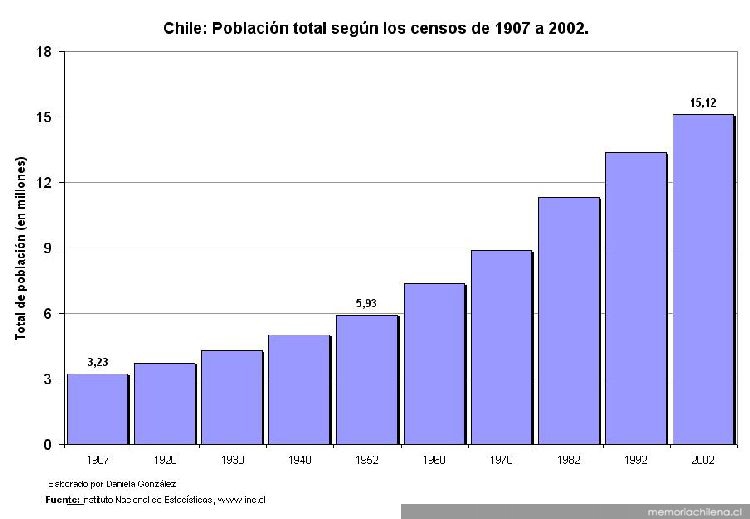The land area
in Chile is 756.096 km2. In this area, coexisted 3,23 millions of people in
1907. This number rose to 15,12 millions in 2002, without any decrease
between this years. You can see a exponencial tendency in Chart 1. So, the population
increase 4,7 times along 20th century.

Chart 1. Population in Chile from 1907 to 2002 (from Memoria Chilena, 2013).
On the
other hand, I’d like to compare Spain: a European country with 505.992 km2 of land
area (about 200.00 km2 smallest than Chile). In 1990, the Spanish were
18.830.649 (6 times Chile’s population). After this year the increase was
linear until 1980, when the growth's rate declined. At the end of 20th
century, Spain has 40,8 millions of people, 2 times the population existing in
1990 (see Chart 2).
Chart 2. Population in Spain from 1900 to 2009 (from Fundación BBVA, 2010).
As you can
see, Spain is smallest than Chile in land area, but even in 1990 holds more
people. The tendency is exponencial here, but in Spain (an oldest country) the growth’s
rate is linear. This fact is actually a problem, because there
is not young people who can replace the oldest. The government try to fix it,
generating benefits to who’s had childs. In Chile, we’ll have this issue on the
next years, as Chile will convert on a First World Country.

No comments:
Post a Comment